BlueStacks' Resource Management Guide for The Walking Dead: Survivors
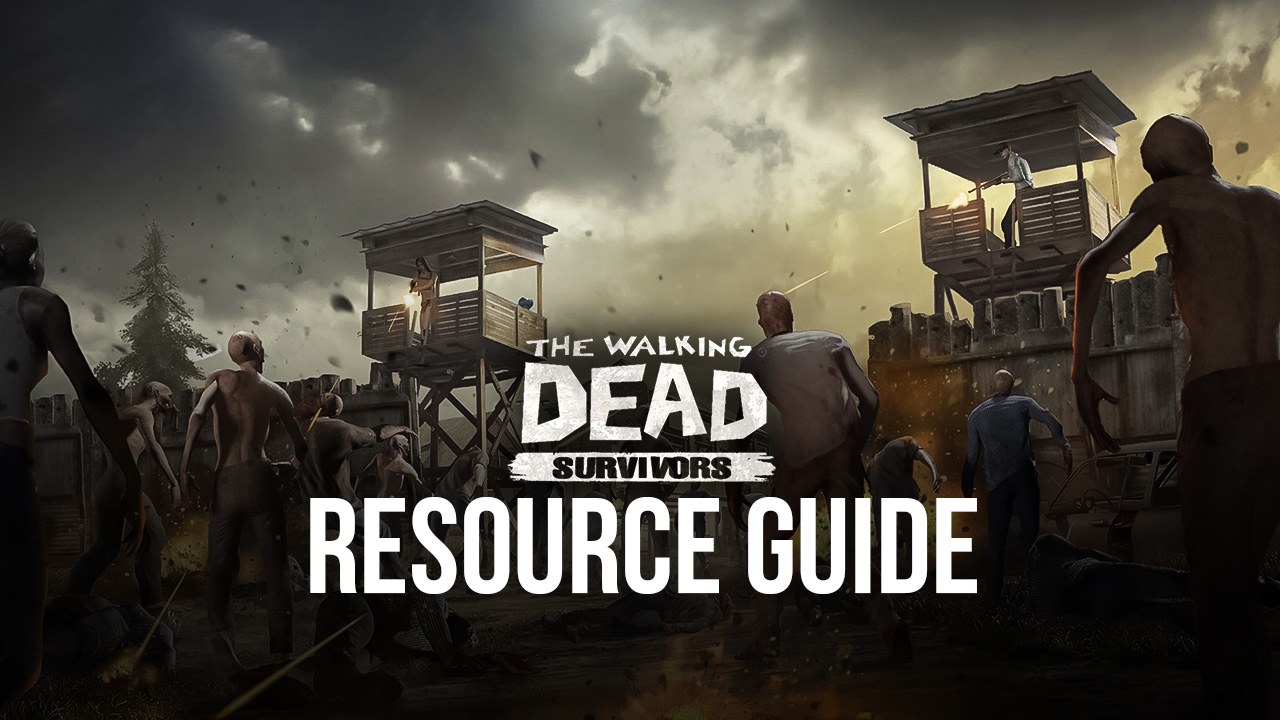
It should go without saying that resources in The Walking Dead: Survivors play a critical role in the players’ survivors camp development. Resource management is the area where most players often fail the most. This causes them to lag behind the competition, because they don’t have any advantage on veterans of this game genre, who know exactly what to prioritize. So, to learn how to properly manage resources, players need to understand the basics of this tactic.

Real-time strategy games can be a real-time pain when it comes to the amount of waiting that players need to endure throughout the game. This is especially true for TWD: Survivors since resources are scarce, despite being allowed a large holding capacity. Once you consider this in combination with the constant threat of enemy players trying to steal your resources, even the best-planning players can be left bankrupt quickly if they don’t know what to do in order to get ahead of the competition.
TWD: Survivors Resources
Players must collect a variety of different resources that are unlocked after progressing enough in the game. There are two types of resources that are classified here as either primary resources or secondary resources, depending on their source.
-
Primary Resources
Primary resources in TWD: Survivors include Veggies, Meat, Water, Lumber, and Bullets. These resources can primarily be acquired either by collecting nodes inside your survivor’s camp or by constructing production buildings. These resources are used in all of your buildings and are easy enough to get your hands on, but upgrades and buildings require a majority of those for upgrading, researching, or training.
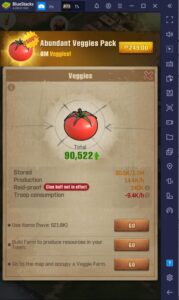
The main distinction between primary resources is that they are often capped depending on the level of their respective storage building. As your survivor camps’ facilities start leveling up, the amount of production increases significantly as well as the cost of the other things around the camp. These resources should be prioritized if you want to upgrade your camp quickly.
-
Secondary Resources
Secondary resources are those that are collected around the map as a reward such as clay, cloth, leather, and so on. These resources aren’t always used in upgrading/construction of a building, training of troops, or conducting research, but you still need them to upgrade a few other things in your camp. These resources are marginally more challenging to collect because you can only get them as rewards from world adventures.
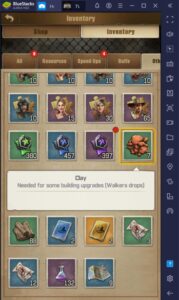
To consistently collect these resources, players must always be occupying world areas that have a small chance of dropping them or attacking zombie hordes at any given time. It’s important to remember though that they are not a guaranteed drop, so you’ll often come home empty-handed. Since attacks are limited by an energy system, players will soon find that it takes a while before you collect the necessary amount.
Best Way To Acquire Resources
The best way to ensure a steady flow of resources inside your base is to construct the maximum number of resource-producing buildings and upgrade them to the highest level as soon as possible. This method will last you even until the late stages of the game and will outlast the need for resource packs and quest rewards that you get for free.
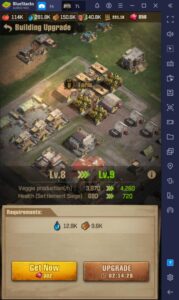
Another huge mistake that inexperienced players make when playing this game is that they ignore upgrading resource-producing buildings because they think they get more than enough resources from their stockpiled resource packs. While those are undeniably helpful in the early game, it should never be the primary source because, before you know it, they’ll quickly prove to be lacking in your objective to upgrade your buildings.
Military Acquired Resources
There are two methods with which you can acquire resources using your fighters. The first method is to use your troops to attack zombie hordes, hostile NPC groups, and resource nodes on the map to collect free resources. This is the “PvE method” because those sources are available at all times and the difficulty is set depending on the player’s capability to attack it.
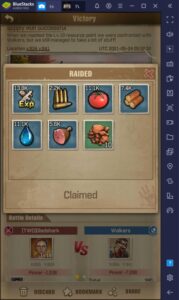
The second way players can use their fighters to collect resources is by trying out the “PvP method.” This requires players to attack other players to steal their resources through acts of military aggression. The player with the stronger army will come out on top, and the bonuses granted to the defending player will serve as a slight advantage. This method will only become efficient if the attacker doesn’t lose too many soldiers during the attack, as they’ll need to re-train lost soldiers to compensate.
Resource Production Influencers
Resource production buildings are the most consistent way to get resources, but they don’t make enough by themselves. To increase your resource production, you’ll need to influence the productivity of these buildings using varied methods such as Development Survivors or Research upgrades. These are two of the major ways you can increase your buildings’ passive production so that you’ll always have a steady supply stream of loot in your survivor’s camp.

Players might want to increase their resource production as soon as possible by spamming these upgrades at their local Library or by leveling up Development Survivors so that they can produce a lot of resources before they start focusing on the military aspect of the game. This is because resources are the backbone of the player’s activities; after all, they power every action that the player will make in the future.
Free Resource Packs
Free resource packs might seem like they’re enough to last you throughout the game, but in truth, these resources will quickly diminish at higher levels when production slows due to expensive upgrade costs. Beginners should treat this as a catch-up mechanic, so that new players can quickly upgrade their low-cost buildings without losing resources.
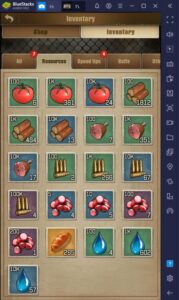
You can find your resource backs inside your inventory. You can choose which and how many resources to add to your current economy. Just keep in mind that resources are capped by how much you can store at a time, so using resource packs when you’re at full storage capacity will be a waste. Be smart about when you want to use these resources so that you don’t end up with resource overflow.
















